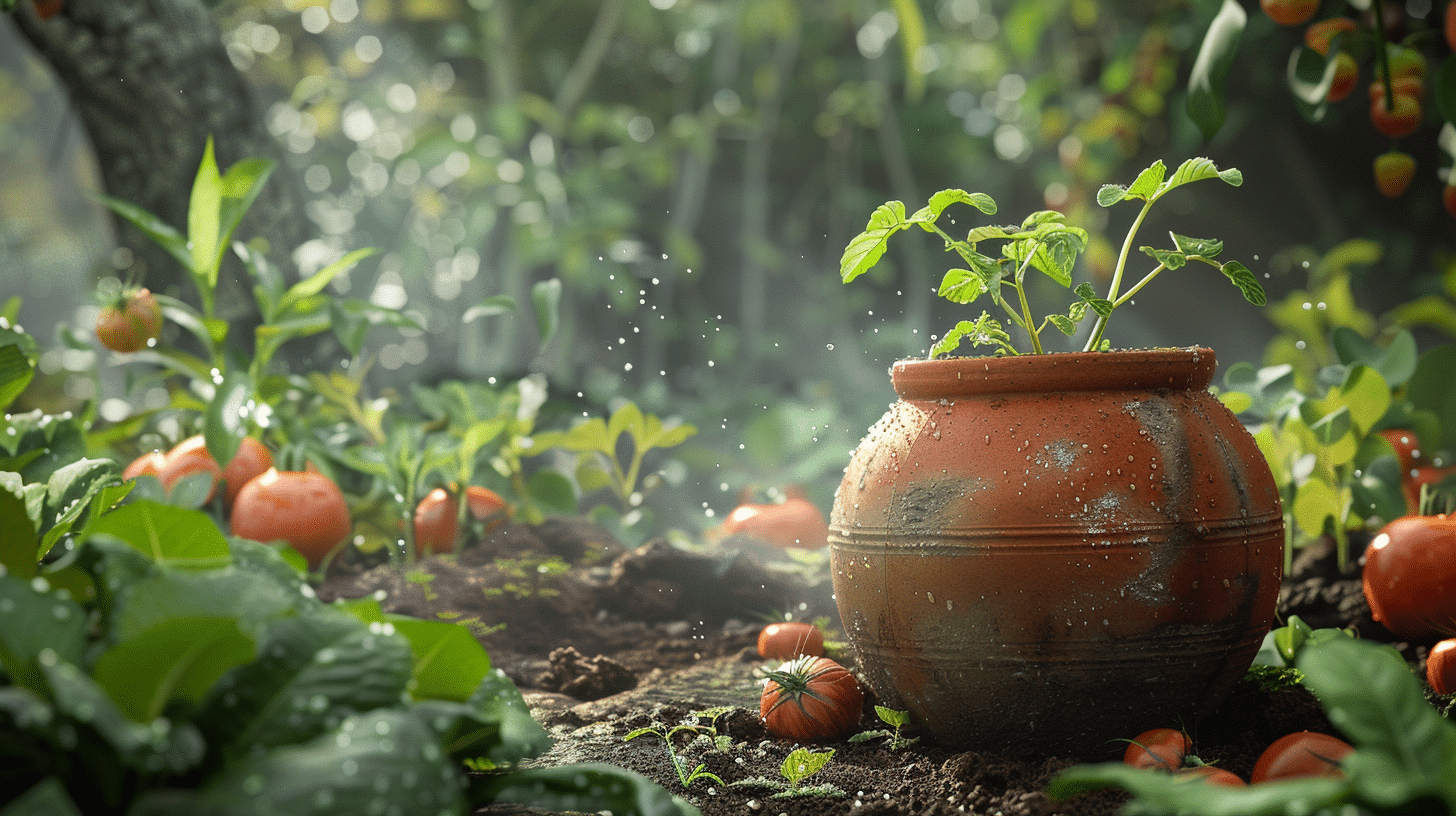Unlock the secrets of efficient watering with an olla pot

Discover the sustainable charms of ancient watering methods in modern gardening. Embrace the olla pot—a terracotta watering vessel that deepens your engagement with nature while conserving resources. Every drop counts, and with our insights, you'll learn to deliver water effectively directly to your plants' roots, fostering health and vitality in your garden without excess. As we peel back the layers of olla pot irrigation, transform your green space into an oasis of efficiency.
The Fundamentals of Olla Pot Watering
Olla pots—an ancient irrigation tool—are experiencing a resurgence among modern gardeners. Recognized for their water-conserving capabilities, olla pots provide a sustainable solution to garden watering. These unglazed terracotta vessels are buried near plants, slowly releasing moisture into the soil, directly to the roots. This not only ensures plants receive water as needed but also minimizes wastage through evaporation.
Cela peut vous intéresser : Elevate your spiritual journey: learn quran online today
When choosing an olla pot, consider the size and garden type. Larger pots suit bigger plants with extensive root systems, while smaller ones are ideal for container gardening or raised beds. The placement should be strategic: close enough to the plant roots to be effective, yet spaced to ensure efficient coverage.
By adopting olla pot watering systems, gardeners can lessen their environmental impact, reduce their physical strain, and promote healthier plant growth with consistent soil moisture levels.
A voir aussi : How Can Interactive E-books Enhance Children’s Learning in UK Primary Schools?
Step-by-Step Guide to Installing Your Olla Pot
Installing an olla pot is straightforward and can significantly improve water conservation in your garden. Begin by preparing your garden, ensuring that it’s free of debris and that the soil is loosened. This helps the olla pot to sit securely and facilitates better water distribution.
Next, bury the olla pot in the soil, leaving the neck exposed for easy filling. The optimal placement is close to the plant's roots but not so close that it disturbs them. Once in place, fill the pot with water. The porous terracotta will enable a slow release of moisture directly to the roots, maintaining ideal moisture levels.
To maintain your olla pot for optimal performance, check the water level regularly. In warmer months, you may need to refill your olla pot every few days. Monitoring the soil moisture will help you adjust your refilling schedule to ensure your plants are hydrated without overwatering. For detailed insights, Find out more about maintaining your olla pot.
Maximizing Garden Efficiency with Olla Pots
Olla pots, when used effectively, can lead to substantial water conservation in gardens, particularly in various climates. These ancient tools are pivotal in establishing a sustainable and eco-friendly garden. They operate on the principle of soil moisture tension, ensuring that water reaches where it's most needed without waste.
- Strategies for water conservation include:
- Grouping plants with similar water needs around a single olla pot.
- Adjusting the watering frequency based on climate, with more frequent refills in arid areas.
- Ensuring the pot is proportional to the plant size for efficient plant hydration.
Olla pots contribute to the garden's ecosystem by supporting a balanced underground water reserve that promotes beneficial microbial activity. This leads to healthier soil and plants, creating a self-sustaining environment. Moreover, the water saved translates into reduced utility bills, echoing the benefits of olla gardening.
